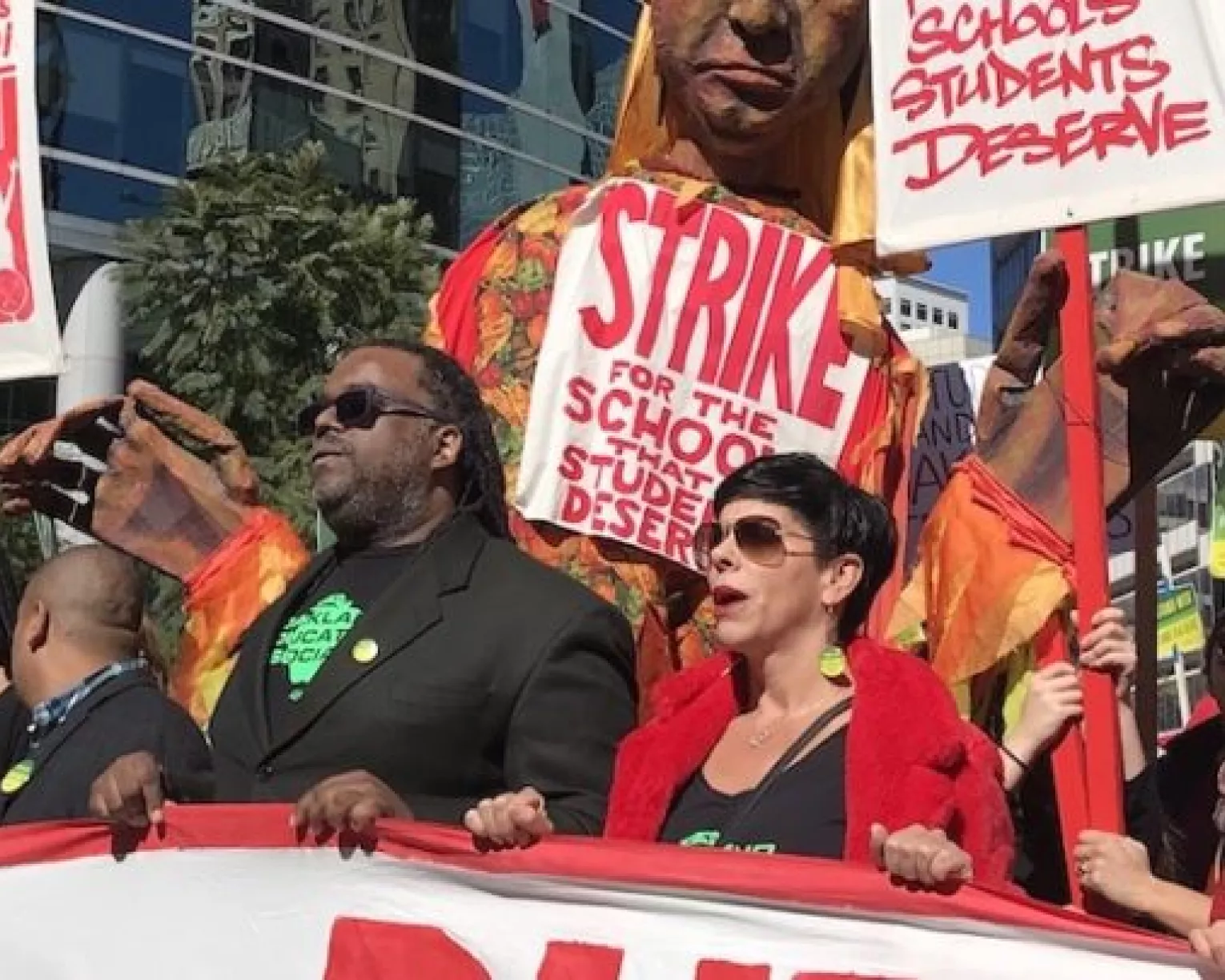Key Takeaways
- Collective bargaining guarantees that educators have a legitimate voice in deciding how and when schools and campuses return to in-person instruction.
- Collective bargaining rights are determined at the state level, how it is used to give educators a voice in local decisions relating to COVID-19 will look different from one state to another.
- Whether or not collective bargaining takes place, a joint health and safety committee provides a collaborative process for addressing in-person instruction, future closures, and ongoing health and safety issues.
Collective bargaining gives educators a meaningful voice in decisions to return to in-person instruction.
Collective bargaining forces employers to address the concerns of educators and obliges management to work with labor to solve problems. The understandings and agreements that are reached through collective bargaining are reduced to binding and enforceable collective bargaining agreements (CBAs) that are supported and approved by educators and their employers. In a COVID-19 environment, collective bargaining guarantees that educators have a legitimate voice in decisions on how and when schools and campuses return to in-person instruction, how we keep educators and students safe once schools are reopened, and how we make certain students have equitable access to online learning when instruction cannot safely take place in-person.
Most teachers, specialized instructional support personnel, and ESPs work in school districts where collective bargaining is used to determine their pay and working conditions.
Three-quarters of 3.2 million public school teachers work in states where collective bargaining is either a mandatory right or is permissible. More than 10,000 local teacher and ESP associations affiliated with NEA and other education unions negotiate CBAs with local school districts.
Since collective bargaining rights for educators and other public employees are determined at the state level, how it is used to give educators a voice in local decisions relating to COVID-19 will look different from one state to another.
Thirty-four states plus the District of Columbia have collective bargaining laws covering K-12 teachers. However, the scope of bargaining varies considerably across these states. Some require bargaining over a broad range of issues, while others significantly limit the things that can or must be negotiated. Another nine states do not have bargaining laws, but permit bargaining at the discretion of individual school districts. The issues that local associations bring to the table in these states are generally not specified in law, meaning all topics are permissive subjects of bargaining. Local and state education associations develop and execute strategies that allow them to best exercise the bargaining rights that are specific to their state and local circumstances.
Collective bargaining agreements typically include provisions on health and safety.
While state laws vary widely on what can be negotiated, employee health and safety is typically addressed in bargaining as a mandatory or permissive subject and health and safety language is usually included in CBAs.
Existing labor agreements and collective bargaining will not impede the ability of school districts to make changes that are necessary to safely reopen buildings and maintain quality instruction during the pandemic.
During difficult times, unions negotiate agreements that reflect the reality of those times. For instance, when revenues plummeted during the Great Recession, unions negotiated CBAs that enabled school districts to fill gaping holes in their budgets. Whether renegotiating expiring CBAs, agreeing to reopen contracts, negotiating memoranda of understanding, or demanding to bargain over the impact of specific decisions, unions can use collective bargaining to make sure that schools and campuses reopen safely or move to distance learning, and that educators and students are kept safe after returning to in-person instruction. In addition to establishing the conditions for in-person instruction, collective bargaining can also be used to facilitate ongoing, collaborative processes to address new issues and make informed decisions in real time.
Whether or not collective bargaining takes place, a joint health and safety committee provides a collaborative process for addressing in-person instruction, future closures, and ongoing health and safety issues.
CBAs often include language on joint labor and management committees to address health and safety concerns. Health and safety committees can also be established in non-bargaining jurisdictions. District-wide committees are important, but equally critical are local level committees. Each school or campus should have its own committee to monitor ongoing developments and varying circumstances of an individual building. For example, mold or ventilation issues may be a problem some buildings, but not others. Health and safety committees can also include community and student voices. It is also important for the association to coordinate the health and safety committee work with bargaining strategies where bargaining occurs.
Educator voice is essential in decision making, whether you have bargaining or not.
Many local associations and school boards use interest-based bargaining (IBB) or other collaborative processes to negotiate labor agreements and facilitate the work of joint labor-management committees. Using a collaborative process to make sure educators have a voice is critically important in places where bargaining does not take place or where the issues that need to be addressed fall outside the scope of negotiations.
Bargaining for the common good is a strategy for COVID-19-related decision making.
COVID-19 has not only caused the greatest public health crisis in a century, it has also laid bare the vast racial inequities that exist in the US and has further exposed how our economic and tax policies are rigged to benefit large corporations and the very wealthy at the expense of working families and marginalized communities. Bargaining for the common good (BCG) is a way that unions tackle systemic problems and address broad concerns by engaging and organizing members, partnering with communities, expanding the scope of bargaining, making negotiations open and transparent, and creating opportunities for engaging in direct action.
Always check with your local association for assistance in enforcing your rights and about additional rights you may have under state laws, collective bargaining agreements or memoranda of understanding with the employer, or policies.

